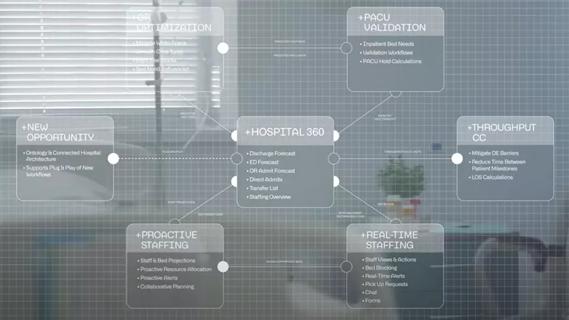Thoughtful collaboration, data-driven decisions and effective change management lead to significant savings
Julie Gadomski views Cleveland Clinic Euclid Hospital’s expenses like managing a personal household budget.
Advertisement
Cleveland Clinic is a non-profit academic medical center. Advertising on our site helps support our mission. We do not endorse non-Cleveland Clinic products or services. Policy
"At work, I treat spending decisions like personal ones by asking, 'Would I pay for this at home?' This mindset helps cut unnecessary costs and shifts perspectives," says Gadomski, Senior Director of Hospital Operations at Euclid Hospital.
Through this lens, it was easier to identify unnecessary costs and encourage more responsible spending. Gadomski emphasizes that sharing this perspective with others often leads to a shift in thinking and behavior.
This guiding principle helped shape the hospital’s approach to evaluating expenses for its 2025 budget and launched its printer consolidation initiative.
Gadomski partnered with Michael McMillin, an ITD systems analyst, to learn more about an earlier success with consolidating printers on a Euclid Hospital nursing floor.
This discussion sparked a hospital-wide initiative where McMillin conducted an inventory and mapped out the printer setup to explore cost-saving opportunities.
“By partnering with nursing leadership, operations and ITD, we ensured buy-in with minimal resistance.” Gadomski continues, “Involving managers and caregivers in decision-making empowered them and made them feel heard.”
McMillin explains, “Printer consolidation entails continuous evaluation and tailored recommendations to ensure efficiency, making it more of an organizational lifestyle change rather than a one-time project.”
He describes the structured approach to optimize device usage and improve efficiency:
Advertisement
Removing the redundant printers helped free up physical space, which enhanced the work environment for caregivers.
Above all, McMillin reassures hesitant caregivers with this simple message: “If it’s not alright, I’ll put the printer back.”
This perspective emphasizes the collaborative nature of the initiative, where the ultimate goal is to support caregivers while achieving cost-saving and efficiency objectives.
To date, Euclid Hospital printers have been reduced by 42% and have eliminated nearly one-third of their printing expenses.
By clearly communicating the purpose and goals of the initiative (e.g., budget targets, eliminating redundancies), caregivers were aligned toward a common objective. The gradual implementation and flexibility (e.g., allowing managers to choose which printer stays) reduced friction. It also allowed caregivers to express their concerns while being involved in decision making.
“We built on this existing success to shift the culture by partnering closely across teams, addressing concerns collaboratively and clearly communicating our purpose with supporting data,” says Gadomski.
Given this success, Gadomski and her team are pursuing other improvement opportunities, such as supply chain optimization and phone system upgrades.
For Gadomski, “This initiative created a culture of shared ownership and problem-solving that fostered stronger relationships and trust among teams.”
Advertisement
This initiative exemplifies how thoughtful collaboration, data-driven decisions and effective change management can lead to significant cost savings while boosting teamwork and innovation.
To that end, Gadomski says, “Our success makes us well-positioned to continue driving efficiencies and adapting to the evolving healthcare landscape.”
Advertisement
Advertisement

Digital “tripwires” detect and respond to malicious activity, boosting cybersecurity maturity

Clinical input is integral to technology implementation and adoption strategy

Unit-based project decreases non-urgent alarms

Integrating technology is more than product delivery

Cleveland Clinic partners with Palantir to create logistical command center

Cleveland Clinic’s roadmap to recovering critical digital assets stems from strategic planning and preparedness

The Friends of Cybersecurity program bridges innovative technology solutions with mitigating security risks

Cleveland Clinic’s Information Technology Apprenticeship Program expands skill set while leading to meaningful employment